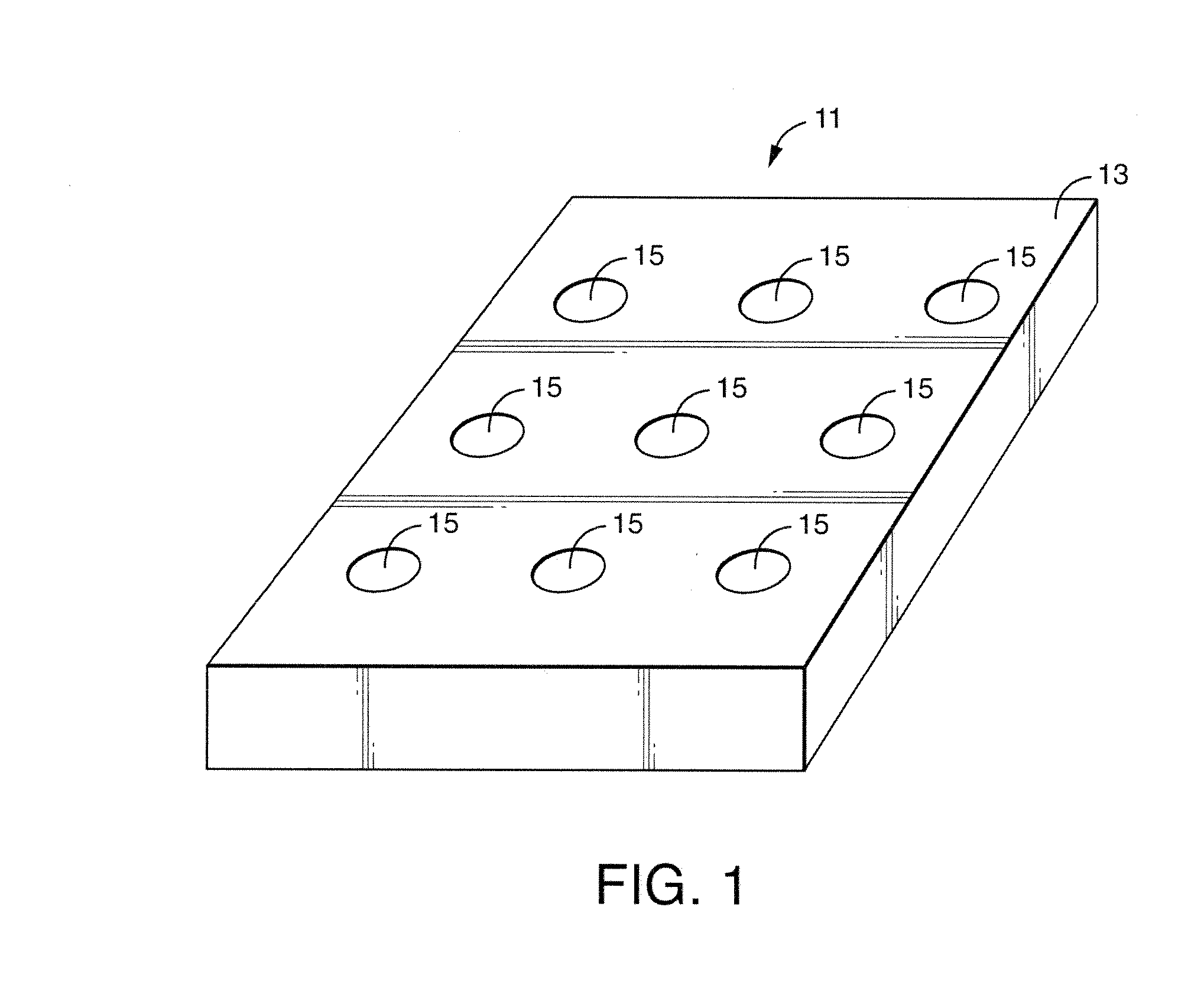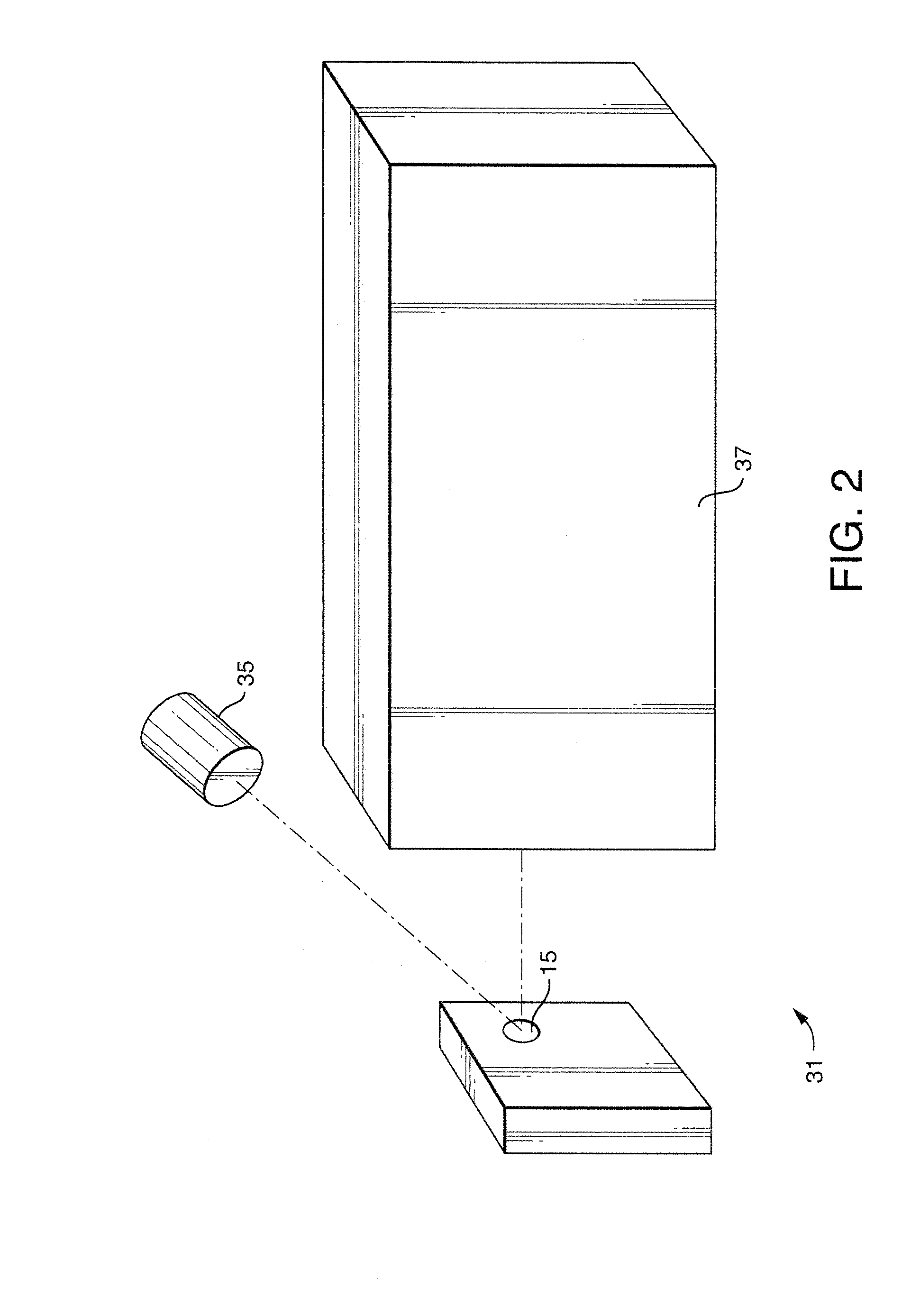Methods, compositions and devices for performing ionization desorption on silicon derivatives
a technology of ionization desorption and silicon derivatives, applied in the field of silicon substrates, can solve problems such as oxidation of silicon hydride surfaces
- Summary
- Abstract
- Description
- Claims
- Application Information
AI Technical Summary
Benefits of technology
Problems solved by technology
Method used
Image
Examples
example 1
[0049] The silicon oxide surface of a substrate was reacted with trimethylchlorosilane, and then washed with neat isopropanol. A sample of bovine serum albumin (BSA) digest was applied to the surface and analyzed using a matrix assisted laser desorption ionization mass spectrometer (MALDI-MS) instrument. 500 amol could be detected, at a concentration comparable to that detected by DIOS-MS from a silicon hydride surface. DIOS-MS was performed on the trimethylsilane (TMS)-derivatized surface over the course of several weeks, and no reduction in signal intensity was observed over that time. In contrast, an underivatized DIOS surface shows significant signal deterioration after 2-3 weeks.
example 2
[0050] The silicon oxide surface was reacted with aminiopropyldimethylethoxysilane. This derivatized surface has been found to provide an enhancement in selectivity for certain compounds. For example, sugars such as sucrose and maltotriose cannot be readily detected by DIOS using silicon hydride surfaces, or TMS-derivatized surfaces. However, the amine-derivatized surface provides several orders of magnitude enhancement in signal. This derivatized surface provides selectivity in adsorption. For example, derivatizing a surface with a cation exchanger would selectively bind basic compounds, and would enable easy removal of neutrals and acid interferences. One example demonstrated with TMS-derivatized surfaces is that peptide digests in a solution of 8M urea can be loaded onto a chip, and the peptide will strongly adsorb to the surface. The non-binding urea can then be easily removed prior to mass spec analysis. A fourth benefit of this derivatization technique is that it provides for ...
example 3
[0051] Peptide digest: DIOS chips were prepared by etching low resistivity (0.005-0.02 Ω-cm) n-type Si(100) wafers (Silicon Sense) in 25% v / v HF / ethanol under white light illumination at a current density of 5 mA / cm2 for 2 minutes. Photopatterning was performed to create 100 sample spots on each chip. Immediately after etching, the DIOS chip was rinsed with ethanol and dried in a stream of N2 to give an H-terminated surface, which was oxidized by exposure to ozone (flow rate of 0.5 g / h from an ozone generator directed at the surface for 30 seconds). The silylation reaction was performed by adding 15 μL of neat pentafluorophenylpropyldimethylchlorosilane on the oxidized DIOS chip, placing the chip in a glass Petri dish, and incubating in an oven at 65° C. for 15 minutes. The modified DIOS chip was then rinsed thoroughly with methanol and was dried in a stream of N2. 0.5 μL of sample containing bovine serum albumen (BSA) tryptic digest in 8 M urea was spotted with a pipette. The liqui...
PUM
 Login to View More
Login to View More Abstract
Description
Claims
Application Information
 Login to View More
Login to View More - R&D
- Intellectual Property
- Life Sciences
- Materials
- Tech Scout
- Unparalleled Data Quality
- Higher Quality Content
- 60% Fewer Hallucinations
Browse by: Latest US Patents, China's latest patents, Technical Efficacy Thesaurus, Application Domain, Technology Topic, Popular Technical Reports.
© 2025 PatSnap. All rights reserved.Legal|Privacy policy|Modern Slavery Act Transparency Statement|Sitemap|About US| Contact US: help@patsnap.com



